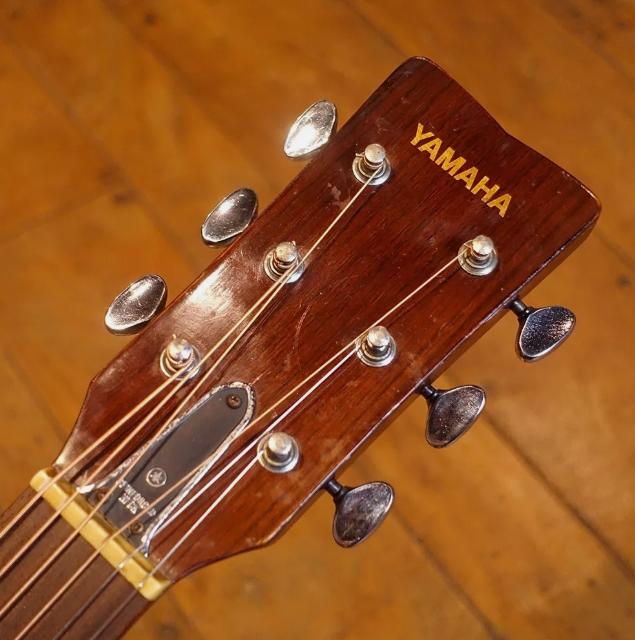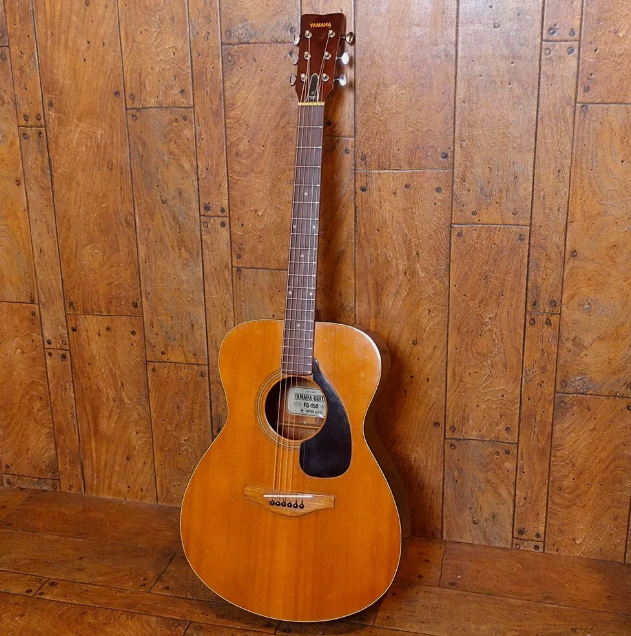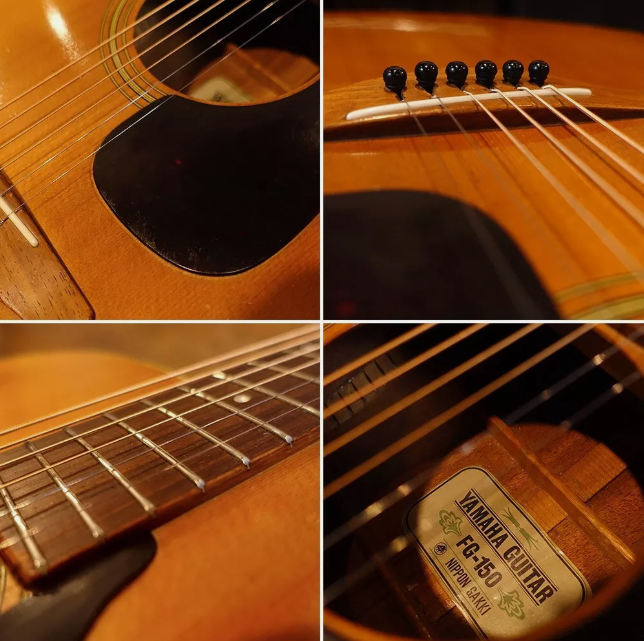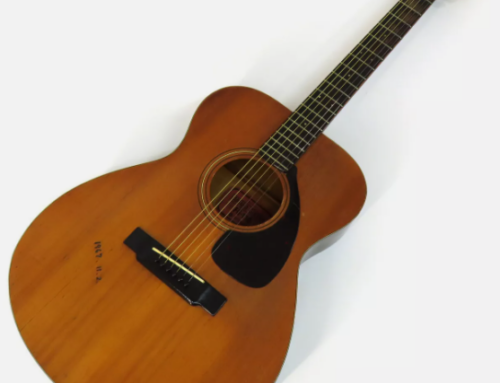Vintage Yamaha FG Generations: A Comprehensive Overview
Yamaha’s FG series of acoustic guitars holds a special place in musical history for its craftsmanship and evolution. The series is divided into four distinct generations, each with unique labels, production locations, and model introductions. Here’s a detailed look at the evolution of Yamaha’s vintage FG guitars:
First Generation (1966–1974)
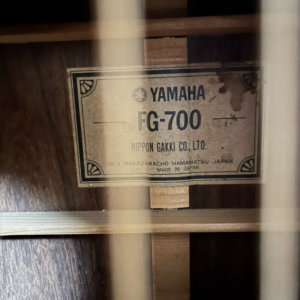
Labels: Green and Red
Production Locations: Nippon Gakki (Japan) and Taiwan
The first generation introduced the original FG models, which remain iconic to this day.
- 1966–1968:
- Initial models included the FG-150 and FG-180 (1966).
- FG-110 was introduced in 1967.
- FG-75, FG-140, FG-230 (12-string), and FG-300 debuted in 1968.
- High-End Models (1969–1971):
- Hand-built FG-500 and FG-550 were introduced in 1969.
- Additional high-end models followed in 1971, catering to professional players.
- Label Transition:
- Only FG-150 and FG-180 featured green labels, produced between late 1966 and early 1967.
- Red labels replaced green in early 1967.
- Taiwan-manufactured guitars adopted red labels starting mid-1971.
- Continued Production:
- FG-75 and FG-110 models were made in Taiwan until mid-1975, switching to tan labels in late 1972.
- Japan continued producing FG-75, FG-150, and FG-300 for the domestic market (non-export) through 1974, adopting tan labels in mid-1974.
Second Generation (1972–1975)
Label: Tan
Production Locations: Nippon Gakki (Japan) and Taiwan
This generation marked the introduction of new models alongside the phasing out of some earlier ones.
- New Models Introduced:
- FG-45, FG-160, FG-170, and FG-200 expanded the lineup.
- Some first-generation models were discontinued.
- Regional Exclusivity:
- Certain models produced in Japan were exclusive to the domestic market and not available for export.
Third Generation (1974–1977)
Label: Black
Production Locations: Nippon Gakki (Japan) and Taiwan
This period saw a significant revamp of existing models, with many receiving a “-1” suffix to denote updates.
- Revamped Models:
- FG-75-1, FG-110-1, FG-160-1, FG-180-1, FG-210-1, and FG-260.
- Label Adoption:
- Japan transitioned to black labels in mid-1974, followed by Taiwan in mid-1975.
- Domestic Exclusivity:
- New models introduced in Japan during this period were non-export.
Fourth Generation (1975–1980)
Labels:
- Taiwan: White Oval
- Nippon Gakki: Orange Oval
Production Locations: Taiwan and Nippon Gakki (Japan)
The fourth generation introduced entirely new models, with all previous ones phased out.
- New Models (Taiwan):
- FG-312, FG-325, FG-330, FG-331, FG-335, FG-336SB, FG-340, FG-345, FG-350W, FG-351SB, FG-365S, FG-375S, FG-412SB, FG-512, FG-750S, and FG-770S.
- Phasing Out:
- Japan transitioned to new models earlier than Taiwan.
- Many new Japanese models were exclusively available domestically.
Generational Overlap
There was some overlap between the first and second generations, as certain first-generation models continued to be produced in both Japan and Taiwan while second-generation models were being introduced.
Notes on Model Numbers
The listed model numbers represent common export models. Some models not included in Yamaha’s archives are omitted due to a lack of serial number records or sightings.
This overview focuses exclusively on “vintage” FG models produced before 1981. Collectors and enthusiasts value these guitars for their craftsmanship, tonal quality, and historical significance.


